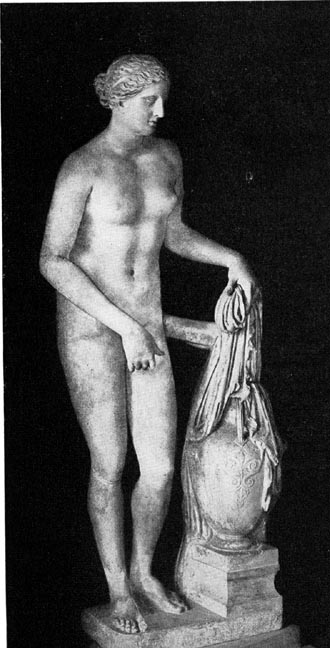
The Knidian Aphrodite (copy)
After Praxiteles
Marble
B.C.
Vatican Museums, Rome
"No one questioned the fact that she was an embodiment of physical desire and that this mysterious, compulsive force was an element in her sanctity, Such sentiments may seem to us incompatible with an object of religious veneration; but that is because the Hebrew basis of our religion has accustomed us to a literary rather than to a visual evocation of physical desire. Compared to the imagery of the Song of Songs, the appeal of the Knidian is mild and restrained. Both derive from the same state of mind, and perhaps even from the same cult, because the Aphrodite of desire was, as we have seen, a Syrian divinity; but the luxuriant sensuality of the form is modified by the Greek sense of decorum, so that the gesture of Aphrodite's hand, which in Eastern religions indicates the source of her powers, in the Knidian modestly conceals it. Perhaps no religion ever again incorporated physical passion so calmly, so sweetly, and so naturally that all who saw her felt that the instincts they shared with beasts they also shared with the gods It was a triumph for beauty." — Kenneth Clark, p. 83